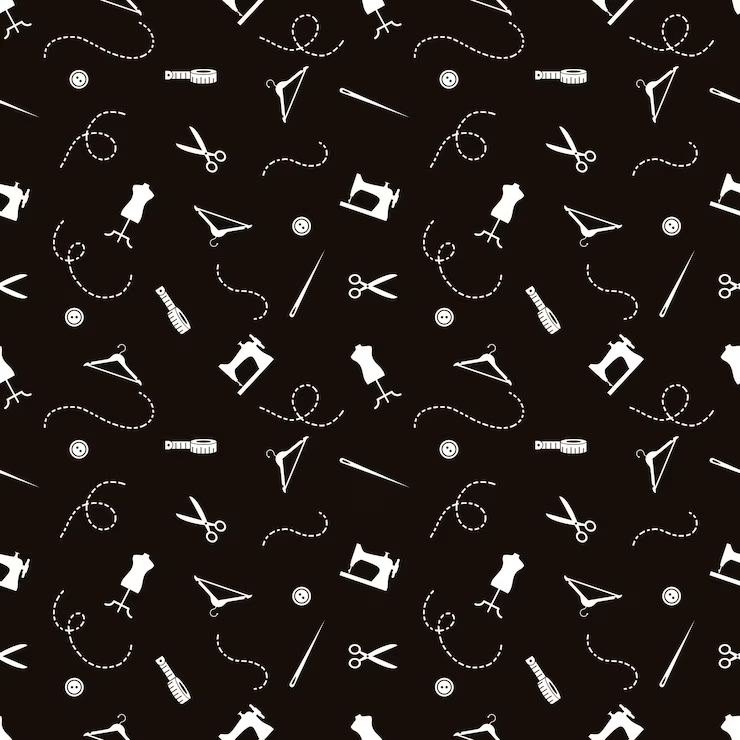When it comes to garment construction and textile design, seams are far more than just joining fabric pieces. The term Nahttypen, which is German for “types of seams,” refers to the wide variety of seam constructions used in sewing and fashion production. Each seam type has a specific function, whether it’s to provide durability, elasticity, or decorative appeal.
Whether you’re a sewing enthusiast, fashion designer, or someone simply curious about the world of textiles, understanding Nahttypen is essential. In this article, we’ll explore the most common and specialized seam types, their construction methods, and their practical uses in the textile industry.
What Are Nahttypen?
Defining Nahttypen
Nahttypen are various classifications of seams based on their structure, purpose, and appearance. Seams play a critical role in shaping garments, reinforcing structural integrity, and contributing to overall aesthetics. From the outside, a seam might look like a simple stitch, but it often involves complex techniques to ensure it performs correctly under different conditions.
Importance of Nahttypen in Fashion
In fashion, choosing the right seam type can affect a garment’s fit, look, and longevity. High-stress areas like shoulders and crotches require stronger seam types, while decorative garments might focus more on seam appearance. Designers must understand Nahttypen to balance functionality and design appeal.
Common Types of Nahttypen
Understanding the common Nahttypen used in sewing allows for greater flexibility and professionalism in garment construction.
1. Plain Seam (Geradstichnaht)
This is the most basic and widely used seam type. It involves placing two fabrics right sides together and sewing a straight stitch along the edge.
-
Use Cases: Everyday clothing, simple home textiles.
-
Strength: Moderate.
-
Appearance: Clean and flat.
2. French Seam (Französische Naht)
A French seam encloses the raw edges of the fabric, making it ideal for delicate and sheer fabrics.
-
Use Cases: Lingerie, silk garments, chiffon blouses.
-
Strength: Moderate to strong.
-
Appearance: Neat and professional from the inside and out.
3. Flat-Felled Seam (Kappnaht)
Flat-felled seams are highly durable and are often found in denim garments like jeans.
-
Use Cases: Denim, sportswear, uniforms.
-
Strength: Very strong.
-
Appearance: Double-stitched, visible from the outside.
4. Overlock Seam (Overlocknaht)
Also known as serged seams, overlock seams use a special machine to trim and stitch edges simultaneously.
-
Use Cases: Stretch fabrics, knitwear.
-
Strength: Moderate to strong.
-
Appearance: Clean with thread loops on the edge.
5. Bound Seam (Einfassnaht)
This seam type involves encasing the seam allowance with bias tape or fabric binding.
-
Use Cases: Decorative garments, unlined jackets.
-
Strength: Moderate.
-
Appearance: High-end and decorative.
Functional Classifications of Nahttypen
Structural Nahttypen
These are essential for holding a garment together. Examples include plain seams and flat-felled seams.
Decorative Nahttypen
Used to enhance the visual appeal of clothing. Examples include top-stitched seams and bound seams.
Flexible Nahttypen
Best for garments that require movement and stretch, such as leggings and sportswear. Overlock and coverstitch seams are ideal examples.
Choosing the Right Nahttypen
Factors to Consider
-
Fabric Type: Thicker fabrics need stronger seam constructions, while delicate fabrics require softer seams.
-
Garment Function: Activewear demands flexibility, whereas formalwear might focus on appearance.
-
Durability: For long-lasting garments, use reinforced Nahttypen.
-
Aesthetic Appeal: Choose decorative seams where design is a priority.
Matching Nahttypen to Garment Sections
-
Shoulders: Use reinforced seams like flat-felled.
-
Side Seams: French or plain seams work well.
-
Necklines: Bound seams add visual interest and durability.
Tools and Techniques for Perfect Nahttypen
Essential Sewing Tools
-
Sewing machine
-
Overlocker (serger)
-
Seam ripper
-
Pressing iron
-
Measuring tape
-
Seam guides
Tips for Clean and Strong Nahttypen
-
Pre-wash your fabric to avoid shrinkage.
-
Use the correct needle for your fabric type.
-
Press seams after sewing to set the stitches.
-
Reinforce high-stress areas with backstitching or double seams.
Advanced Nahttypen for Professionals
For those with more experience, there are specialized Nahttypen that offer both function and artistic expression.
Lapped Seams (Überlappte Nähte)
Used in leather and thick materials, these involve overlapping one fabric edge over another.
Hong Kong Seam
A type of bound seam that adds elegance to unlined garments, popular in couture fashion.
Double-Stitched Seam
Adds durability and is often used in outdoor gear and industrial applications.
Sustainability and Nahttypen
Choosing the right can even contribute to sustainable fashion. Durable seam types reduce the likelihood of garments falling apart, which extends their life. Additionally, some seam finishes reduce the need for lining or extra fabric, minimizing waste.
Conclusion: Why Understanding Nahttypen Matters
Whether you’re a beginner or a seasoned professional, understanding Nahttypen is a cornerstone of good garment construction. These seam types do more than hold fabric together — they influence comfort, fit, aesthetics, and even sustainability.
As sewing trends evolve and new materials emerge, knowing when and how to use each seam type will keep your creations looking professional and feeling great. So the next time you pick up a needle and thread, consider not just stitching but choosing the right for the job

